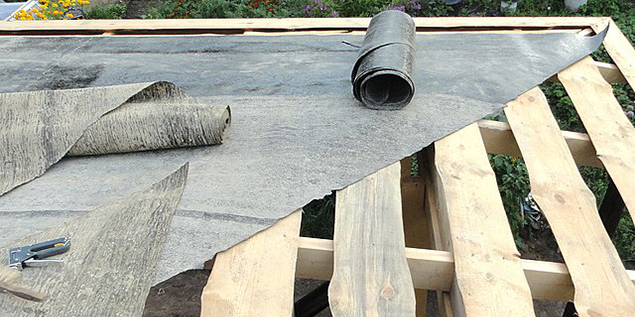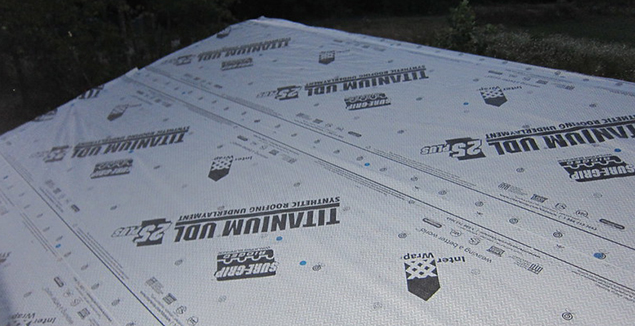Synthetic vs. Felt Roofing Underlayment
Roofing underlayment is an important part of your roof, protecting it from difficult Texas weather. Learn more about which kind might be right for you.
Your roof provides your home with multiple layers of protection. The shingles are just the part that everyone can see. A layer called “roofing underlayment” sits between several other layers and provides some very important protections. Two kinds of roofing underlayment are available: felt and synthetic. Each kind has its pros and cons related to features like price, ease of installation, and durability. Read on to learn more about each type of roofing underlayment. If you have questions, a roofing professional can help determine which kind of roofing underlayment would be best for your home.
What is roofing underlayment?
Roofing underlayment is a material that is installed directly onto the roof deck or roof sheathing. The shingles then go on top of the underlayment. The roof deck is typically made of plywood or oriented strand board (OSB), while the shingles could be made of asphalt, slate, or various other materials.

Photo from PxHere
While the shingles are a roof’s first line of defense against the elements, roofing underlayment offers important support in that effort. It provides secondary protection against rain and snow, which is important for extending the life of a roof as long as possible. Roofing underlayment also protects the lower layers from the upper layers. It prevents the plywood or OSB in the roof deck from absorbing tar and other materials used in shingles.
Two types of roofing underlayment are available to homeowners:
- Felt underlayment is made from paper or fiberglass mat that has been saturated with asphalt. It is generally considered best for cold, dry climates.
- Synthetic underlayment is made from a variety of polymers. It is not subject to any industry standards, so the materials used to manufacture synthetic roofing underlayment can vary among brands. It can work in almost any climate, but it often outperforms felt in warm, wet climates.
Pros and cons of felt roofing underlayment

Photo by Андрей Перцев 1967 at Russian Wikipedia, CC0, via Wikimedia Commons
The advantages of felt roofing underlayment include:
- Track record: Felt roofing underlayment has been around for decades, making it a favorite among many roofing contractors.
- Cost: Felt generally costs less than its synthetic counterparts, which many cost-conscious homeowners prefer.
- Environment: At some point, you or a later homeowner will have to dispose of roofing material. Felt underlayment made from paper is at least somewhat less harsh on the environment than other types of underlayment.
The disadvantages include:
- Weight: Felt is heavier than synthetic underlayment. This adds to the overall burden on the roof. It also means that each roll of underlayment has less material.
- Fragility: Felt underlayment can tear if stretched or exposed to high wind. Sunlight can quickly degrade felt.
Installation difficulty: Felt cannot remain exposed on the roof deck for very long, so the shingles must be installed quickly. If felt remains open to the air, it can dry out or absorb too much moisture. That reduces the amount of protection it offers. - Risk for installers: The surface of felt can be slippery, which means installers must take extra precautions.
- Warranties: Some roof manufacturers’ warranties require the use of synthetic roofing underlayment.
Pros and cons of synthetic roofing underlayment

Photo by Jesus Rodriguez from Flickr [Creative Commons]
The pros offered by synthetic underlayment include:
- Durability: The synthetic material is very tough. It is resistant to tearing and can stand up to exposure to the elements.
- Ease of installation: Synthetic underlayment can be installed quickly, with less risk to installers.
- Water-repellant: While not 100% waterproof, synthetic underlayment is very effective at repelling water.
- Weight: The synthetic materials are considerably lighter than felt.
Synthetic roofing underlayment’s cons include:
- Cost: Synthetic underlayment is more expensive than felt.
- Environment: Generally speaking, the polymers used in synthetic underlayment are likely to be harder on the environment than some types of felt.
Note that, while synthetic underlayment costs more than felt, it also tends to last longer. Over the entire life of a roof, synthetic underlayment could prove to be more cost-effective.
Get answers from RoofCrafters
The skilled and experienced professionals at RoofCrafters provide unmatched workmanship and service in the greater Austin area. Contact us today to schedule your free roof inspection or just to get some questions answered!
